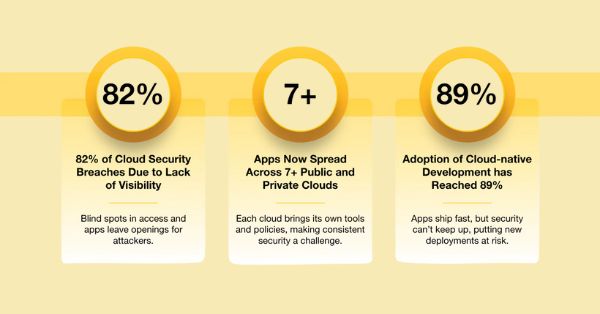Introduction
As the world rapidly embraces the transformative potential of 5G technology, heralding a new era of ultra-fast internet speeds, minimal latency, and enhanced digital connectivity, India is positioning itself as a key player in this global evolution.
This dynamic shift towards comprehensive 5G deployment is reshaping the nation’s digital landscape, signifying a leap towards becoming a frontrunner in telecommunications innovation. Central to this advancement is the pivotal role played by leading telecom giants, Reliance Jio and Bharti Airtel, whose concerted efforts have propelled India into the global top 15 for 5G median download speeds. This notable achievement underscores the nation’s commitment to upgrading its digital infrastructure to global standards, opening new opportunities for growth and opportunity.
The latest Ookla report casts a spotlight on India’s significant strides in the 5G domain, with Reliance Jio emerging as a formidable force in this technological leap forward. The telecom behemoth’s strategic deployment and stellar performance in 5G services have enhanced India’s telecom infrastructure, achieved extensive coverage, and delivered superior performance that caters to millions of users nationwide. Leveraging a strategic mix of low-band and mid-band spectrum, coupled with an expansive fiber network, Reliance Jio has successfully offered its subscribers a seamless blend of coverage, speed, and reliability, setting a high benchmark in the telecom industry.
However, the narrative of India’s 5G revolution is not solely Jio’s. Bharti Airtel, another telecom powerhouse, plays an equally critical role in this transformative journey. Together, these two operators are at the forefront of India’s rapid 5G rollout, demonstrating a strong commitment to enhancing network capabilities and ensuring widespread accessibility of high-speed internet across the country. Airtel’s efforts, alongside Jio’s, in expanding the 5G network and investing in next-generation technology highlight the collaborative push towards establishing India as a global leader in digital connectivity.
As we explore the intricacies of India’s progression in the 5G arena, the contributions of Reliance Jio and Bharti Airtel emerge as pillars of the nation’s telecom revolution. Their achievements, as detailed in the Ookla report, reflect not just their dominance in the Indian market but also symbolize pivotal steps towards harnessing the full spectrum of opportunities afforded by 5G technology. This collaborative endeavor between the two telecom giants underscores a shared vision for a digitally empowered India, setting the stage for an era of unprecedented connectivity and innovation.
India’s 5G Landscape Transformation
India’s Leap into the Future: The 5G Deployment Milestone
As of February 2024, India’s telecom landscape has undergone a monumental transformation, marking a new era in digital connectivity with the aggressive rollout of 5G networks. This ambitious leap forward is encapsulated in the deployment of over 4.25 lakh (425,000) Base Transceiver Stations (BTS) across the country, a testament to India’s commitment to spearheading the global 5G revolution. Among these, a staggering 80% have been attributed to Reliance Jio, underscoring the telecom giant’s pivotal role in India’s 5G narrative.
Reliance Jio, alongside Bharti Airtel, has been at the forefront of this transformative journey, driving the rapid deployment and expansion of 5G networks across the nation. Their concerted efforts have accelerated India’s transition into a digitally empowered society and significantly contributed to the country’s ascent in the global telecom arena.
The Evolution of 5G Availability: A Year of Unprecedented Growth
The journey from Q1 to Q4 2023 marks a remarkable chapter in India’s 5G story, with the country witnessing a phenomenal increase in 5G availability. The percentage of 5G availability surged from 28.1% in the first quarter to an impressive 52.0% by the end of the fourth quarter. This remarkable growth, representing a 23.9 percentage point increase within a single year, illustrates the dynamic and rapid pace at which 5G technology has been embraced across the country.
Reliance Jio’s proactive and strategic approach to deploying a 5G Standalone (SA) network has been instrumental in achieving these milestones. The operator’s 5G network showcased an availability rate of 68.8% during Q4 2023, significantly outpacing its competitor, Bharti Airtel, which stood at 30.3%. This extensive coverage, facilitated by a strategic combination of low-band (700 MHz) and mid-band (3.5 GHz) spectrum, along with an extensive fiber network, has enabled Reliance Jio to deliver a superior blend of coverage and performance.
India’s Ascendancy in Global Rankings for 5G Speeds
The concerted efforts of Reliance Jio and Bharti Airtel have not only enhanced 5G availability but have also propelled India into the top 15 countries worldwide in terms of 5G median download speeds. By Q4 2023, India boasted a median download speed of 301.86 Mbps, placing it firmly on the global map of nations with cutting-edge 5G infrastructure. This achievement clearly indicates the quality and efficiency of India’s 5G network, reflecting the country’s capabilities in delivering high-speed internet to its citizens.
The transformation of India’s 5G landscape from the beginning of 2023 to February 2024 is a narrative of technological excellence, strategic foresight, and collaborative effort. The significant installation of BTS, led by Reliance Jio’s unparalleled contribution, and the evolution of 5G availability across the country have enhanced the digital experience for millions of users and positioned India as a formidable player in the global 5G arena. This journey, marked by rapid development and ambitious goals, sets the stage for a future where digital connectivity is the backbone of socio-economic growth and innovation.
Reliance Jio vs. Airtel: A 5G Performance Showdown
Pioneering 5G Standalone (SA) Network Implementation
Reliance Jio’s approach to the 5G rollout in India is characterized by its pioneering implementation of a 5G Standalone (SA) network from the very outset. Unlike the Non-Standalone (NSA) networks, which rely on existing 4G infrastructure, SA networks are built exclusively for 5G, offering a pure 5G experience with enhanced capabilities, including ultra-low latency, massive network capacity, and increased bandwidth. This strategic choice has positioned Reliance Jio as a leader in India’s 5G revolution and a visionary shaping the future of telecom in the country.
Jio’s deployment of a 5G SA network is a testament to its commitment to leveraging the full potential of 5G technology. By adopting this advanced architecture, Jio has ensured that its network is future-ready, capable of supporting innovative applications and services that demand high-speed, reliable connectivity, such as augmented and virtual reality, the Internet of Things (IoT), and smart city solutions.
Superior 5G Coverage and Performance: Reliance Jio vs. Airtel
The competitive landscape of India’s telecom sector has been markedly reshaped by the rollout of 5G, with Reliance Jio and Bharti Airtel leading the charge. A critical comparison of 5G availability and performance between these two giants reveals Reliance Jio’s superior edge. By Q4 2023, Jio’s 5G availability soared to 68.8%, a stark contrast to Airtel’s 30.3%, underscoring Jio’s expansive reach and commitment to ensuring widespread access to 5G services nationwide.
The difference is equally striking in terms of performance. Reliance Jio’s strategic investment in a combination of low-band (700 MHz) and mid-band (3.5 GHz) spectrum has been instrumental in achieving not just widespread coverage but also unparalleled speed and reliability. This spectrum strategy, coupled with Jio’s extensive fiber network, has enabled it to offer its subscribers a seamless and superior 5G experience.
Transforming Digital Experiences: Video Streaming and Mobile Gaming
The impact of Reliance Jio’s 5G network on user experience, particularly in video streaming and mobile gaming, has been profound. With the deployment of 5G, consumers have enjoyed significant improvements in video start times and a reduction in buffering, enhancing the overall streaming experience. Specifically, Jio’s 5G network reported a video start time of 1.14 seconds, compared to Airtel’s 5G network, which was slightly slower at 1.99 seconds. This enhancement clearly indicates the efficiency and performance superiority of Jio’s 5G network, offering a smoother and more enjoyable viewing experience for its users.
In the realm of mobile gaming, where latency is a critical factor affecting gameplay and user satisfaction, Jio’s 5G network has made notable strides in reducing latency, thus providing a more responsive and engaging gaming experience. Gamers on Jio’s 5G network have benefited from lower latency, with measurements showing an impressive improvement, ensuring smoother gameplay without the frustration of lag or delay.
The advancements in video streaming and mobile gaming experiences are tangible manifestations of the 5G revolution brought about by Reliance Jio. By delivering faster video start times and reducing gaming latency, Jio’s 5G network has not only elevated the quality of digital entertainment but has also set new standards for what consumers can expect from their mobile internet service. This transformative impact highlights the broader potential of 5G to redefine the digital landscape, making advanced and immersive digital experiences more accessible to users across India.
Measuring the 5G Experience: User Feedback and Trends
The Net Promoter Score (NPS) and Consumer Satisfaction
The Net Promoter Score (NPS), a widely recognized measure of customer loyalty and satisfaction, serves as a critical indicator in assessing the public’s reception of 5G services. By gauging the willingness of customers to recommend their network provider to others, the NPS offers invaluable insights into the perceived value and quality of 5G connectivity. In the case of India’s burgeoning 5G landscape, the NPS has been instrumental in capturing consumer sentiment towards the next-generation wireless technology offered by major telecom operators like Reliance Jio and Bharti Airtel.
In the initial quarters following the launch of 5G services, both telecom giants recorded promising NPS scores, reflecting the optimism and excitement surrounding the advent of faster and more reliable internet. Specifically, Reliance Jio’s NPS for its 5G service registered at 7.4 in Q4 2023, a figure that underscores a positive reception amongst its user base. This initial enthusiasm is a testament to the transformative potential consumers see in 5G technology.
Positive Sentiment with a Note on Declining NPS
Despite the generally positive consumer sentiment towards 5G services, a noted decline in NPS over subsequent quarters has sparked a dialogue within the telecom industry. This gradual shift in consumer sentiment, characterized by a slight decrease in NPS, suggests a maturation in users’ expectations from 5G services. As the novelty of 5G wears off, consumers are increasingly seeking more tangible improvements in their daily digital interactions beyond just faster speeds. This adjustment period is indicative of the evolving relationship between telecom operators and their customers as both navigate the complexities of delivering and experiencing next-gen connectivity.
It’s important to consider that this decline does not necessarily reflect dissatisfaction with 5G technology itself but rather points to the growing pains of a rapidly advancing digital infrastructure. It highlights the need for continuous improvement and adaptation by service providers to meet their users’ rising expectations.
Transforming Consumer Experiences Across Digital Domains
The impact of 5G on consumer experiences, particularly in high-demand domains like video streaming and mobile gaming, has been significant. With its promise of higher bandwidth and lower latency, 5G has markedly enhanced the quality of streaming services, offering users faster start times and reduced buffering. This improvement enhances the viewing experience and encourages the consumption of higher-quality video content, pushing the boundaries of what mobile entertainment can offer.
In the gaming sector, 5G’s low latency has been a game-changer, providing a smoother, more responsive gaming experience that was previously unattainable on mobile networks. This has satisfied the hardcore gaming community and made mobile gaming more appealing to a broader audience, contributing to the sector’s explosive growth in India.
Moreover, the overall mobile internet usage experience has seen a paradigm shift with the advent of 5G. From everyday web browsing to engaging in augmented reality (AR) and virtual reality (VR) applications, users are beginning to explore the breadth of possibilities enabled by 5G’s superior performance. This exploration into new digital territories signifies a broader transformation in consumer behavior driven by the enhanced capabilities of 5G networks.
The evolution of consumer sentiment and experience in the era of 5G underscores a critical juncture in India’s digital journey. As telecom operators continue to refine their offerings, the focus remains on harnessing the full potential of 5G to meet and exceed consumer expectations, ultimately shaping a future where digital connectivity empowers every aspect of personal and professional life.
The Road Ahead for India’s 5G Ecosystem
Catalyzing India’s Global Digital Economy Stature
The advent of 5G technology in India is not just a leap in telecom infrastructure; it’s a transformative force poised to catapult India’s position in the global digital economy. With 5G, India is set to witness an unprecedented surge in mobile data consumption, propelled by the network’s ability to support high-speed data services and accommodate the exponentially growing volume of data traffic. This shift is indicative of a broader trend where digital connectivity becomes the backbone of economic growth, innovation, and competitiveness on the world stage.
The role of 5G in enhancing mobile data consumption trends is profound. As users increasingly gravitate towards data-intensive applications like high-definition video streaming, augmented reality (AR), and virtual reality (VR), 5G’s superior bandwidth and reduced latency make these experiences more seamless and accessible. Consequently, India’s digital content ecosystem is expected to expand dramatically, creating new opportunities for content creators, technology entrepreneurs, and businesses alike, thereby reinforcing India’s stature as a burgeoning hub in the global digital economy.
Projecting the Trajectory of 5G Adoption
The future of 5G adoption in India looks bright, with projections indicating a steep increase in the number of 5G subscribers in the coming years. As the technology becomes more widespread and accessible, the number of users leveraging 5G’s capabilities is expected to skyrocket, driven by declining device costs, expanding network coverage, and introducing new, innovative services tailored to meet the diverse needs of the Indian market.
Among the anticipated innovations is the rollout of Fixed Wireless Access (FWA) services, which promise to revolutionize home and business internet connectivity. By offering high-speed broadband services wirelessly over 5G networks, FWA has the potential to bridge the digital divide, providing underserved and rural communities with reliable access to the internet. This development is especially significant for India, where traditional wired broadband penetration remains low in many areas.
Navigating Upcoming Developments in the Telecom Sector
The Indian telecom sector is on the cusp of several exciting developments that promise further to shape the landscape of 5G in the country. Notably, Vodafone Idea’s planned launch of its 5G services represents the next phase in the competitive evolution of India’s telecom industry. As the third major operator to enter the 5G fray, Vodafone Idea’s entry is poised to intensify competition, drive innovation, and potentially lead to more attractive pricing and service offerings for consumers.
Moreover, the Department of Telecommunications (DoT) is gearing up for another spectrum auction, expected to take place in May 2024. This event is critical, as it will offer additional 5G bands to the market, thereby enhancing the capacity and performance of 5G networks across the country. The auction is a pivotal step towards expanding the 5G ecosystem, enabling operators to refine their networks further and introduce a wider array of services.
As India navigates these developments, the overarching vision is clear: to leverage 5G as a catalyst for socio-economic transformation, driving progress in urban centers and across every corner of the country. With the collective efforts of government bodies, telecom operators, and the technology community, India’s 5G ecosystem is poised for remarkable growth and innovation. The road ahead is replete with opportunities to redefine connectivity, enhance digital inclusivity, and position India as a leader in the global digital revolution.
Conclusion
The journey of 5G deployment in India, led by pioneers like Reliance Jio, marks a seminal chapter in the nation’s digital evolution. Reliance Jio’s strategic foresight and relentless pursuit of excellence have positioned it at the forefront of India’s 5G revolution. The company’s achievements in rolling out a comprehensive 5G Standalone (SA) network, achieving unparalleled coverage, and delivering superior network performance have set new benchmarks in the telecom industry and catalyzed a transformative shift in how digital connectivity is perceived and utilized across the country.
The impact of these advancements extends far beyond the telecom sector, heralding a new era of enhanced connectivity, improved digital services, and accelerated economic growth. 5G technology, with its promise of high-speed internet, low latency, and massive data handling capabilities, is poised to revolutionize various sectors by enabling innovative applications and services, from smart cities and automated industries to telemedicine and e-education. This paradigm shift towards a more connected and digital-first economy positions India to capitalize on the myriad opportunities presented by the digital age, driving sustainable growth and enhancing the quality of life for its citizens.
Looking ahead, the trajectory of 5G in India is one of immense potential and promise. The continued importance of innovation and investment by key telecom industry players, including established giants like Reliance Jio and Bharti Airtel and emerging players like Vodafone Idea, will be crucial in shaping the future landscape of 5G connectivity. The government’s role in facilitating this growth through policy support, spectrum allocation, and fostering an enabling environment for technological advancements cannot be overstated.
As India stands on the cusp of a digital revolution powered by 5G, the collective focus of the telecom industry, policymakers, and the technology ecosystem on driving innovation, expanding network infrastructure, and enhancing service offerings will be pivotal. The journey ahead is filled with challenges but also with unparalleled opportunities to redefine the contours of digital connectivity and usher in an era of unprecedented growth and prosperity. The continued evolution of the 5G ecosystem in India is a testament to the nation’s resilience, ingenuity, and commitment to achieving digital supremacy on the global stage.

































